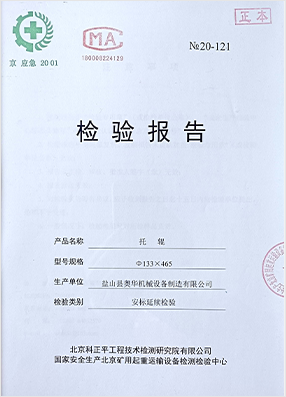 Afrikaans
Afrikaans  Albanian
Albanian  Amharic
Amharic  Arabic
Arabic  Armenian
Armenian  Azerbaijani
Azerbaijani  Basque
Basque  Belarusian
Belarusian  Bengali
Bengali  Bosnian
Bosnian  Bulgarian
Bulgarian  Catalan
Catalan  Cebuano
Cebuano  Corsican
Corsican  Croatian
Croatian  Czech
Czech  Danish
Danish  Dutch
Dutch  English
English  Esperanto
Esperanto  Estonian
Estonian  Finnish
Finnish  French
French  Frisian
Frisian  Galician
Galician  Georgian
Georgian  German
German  Greek
Greek  Gujarati
Gujarati  Haitian Creole
Haitian Creole  hausa
hausa  hawaiian
hawaiian  Hebrew
Hebrew  Hindi
Hindi  Miao
Miao  Hungarian
Hungarian  Icelandic
Icelandic  igbo
igbo  Indonesian
Indonesian  irish
irish  Italian
Italian  Japanese
Japanese  Javanese
Javanese  Kannada
Kannada  kazakh
kazakh  Khmer
Khmer  Rwandese
Rwandese  Korean
Korean  Kurdish
Kurdish  Kyrgyz
Kyrgyz  Lao
Lao  Latin
Latin  Latvian
Latvian  Lithuanian
Lithuanian  Luxembourgish
Luxembourgish  Macedonian
Macedonian  Malgashi
Malgashi  Malay
Malay  Malayalam
Malayalam  Maltese
Maltese  Maori
Maori  Marathi
Marathi  Mongolian
Mongolian  Myanmar
Myanmar  Nepali
Nepali  Norwegian
Norwegian  Norwegian
Norwegian  Occitan
Occitan  Pashto
Pashto  Persian
Persian  Polish
Polish  Portuguese
Portuguese  Punjabi
Punjabi  Romanian
Romanian  Russian
Russian  Samoan
Samoan  Scottish Gaelic
Scottish Gaelic  Serbian
Serbian  Sesotho
Sesotho  Shona
Shona  Sindhi
Sindhi  Sinhala
Sinhala  Slovak
Slovak  Slovenian
Slovenian  Somali
Somali  Spanish
Spanish  Sundanese
Sundanese  Swahili
Swahili  Swedish
Swedish  Tagalog
Tagalog  Tajik
Tajik  Tamil
Tamil  Tatar
Tatar  Telugu
Telugu  Thai
Thai  Turkish
Turkish  Turkmen
Turkmen  Ukrainian
Ukrainian  Urdu
Urdu  Uighur
Uighur  Uzbek
Uzbek  Vietnamese
Vietnamese  Welsh
Welsh  Bantu
Bantu  Yiddish
Yiddish  Yoruba
Yoruba  Zulu
Zulu Understanding the Functionality of Conveyor Head and Tail Pulleys in Systems
Understanding Conveyor Head and Tail Pulleys
Conveyor systems are fundamental in various industries, from manufacturing to mining, helping to transport materials efficiently across different areas. At the heart of these systems are components known as head and tail pulleys, which play crucial roles in the operational effectiveness of conveyor belts.
What are Head and Tail Pulleys?
Head pulleys, located at the discharge end of the conveyor, facilitate the movement of the belt and the material being transported. They serve as the primary driving force, typically connected to a motor that powers the system. The tail pulley, on the other hand, is situated at the loading end of the conveyor. It plays a different but equally important role—supporting the return side of the belt as it moves back towards the head pulley for another round of transport.
Construction and Design
Both head and tail pulleys are designed for durability and efficiency. They are generally made from high-strength materials such as steel, ensuring they can withstand the considerable forces generated during operation. The surface of these pulleys may also be designed with various coatings or patterns to improve friction, ensuring effective belt grip. Additionally, pulleys are mounted on bearings that allow for smooth rotation, which is essential for minimizing wear and energy consumption.
The design parameters of head and tail pulleys can vary significantly based on the specific application. For example, the diameter of a head pulley is often larger than that of a tail pulley, as it needs to create sufficient tension in the belt and accommodate the motor. The angle and alignment of these components are also critical; misalignment can lead to increased wear and failure of the conveyor system.
Functions and Importance in Conveyor Systems
conveyor head and tail pulley

Head pulleys serve several functions beyond merely driving the belt. They are responsible for maintaining belt tension and alignment, which are both critical for the efficient operation of the conveyor system. Proper tension prevents slippage and ensures that the belt moves smoothly, reducing the risk of damage to both the belt and the materials being transported.
Tail pulleys play a significant role in supporting the reverse travel of the belt. Without a properly designed tail pulley, the return belt could sag, leading to uneven wear and increased maintenance costs. Furthermore, the tail pulley also helps in controlling the load distribution on the conveyor, which can impact overall system performance.
Maintenance and Best Practices
Regular maintenance of head and tail pulleys is essential for ensuring the longevity and efficiency of conveyor systems. This includes inspections for wear, alignment, and lubrication. It's also important to check for any debris or materials that may accumulate around the pulleys, as these can interfere with their operation.
Properly training personnel who operate and maintain these systems is equally vital. Understanding how to adjust tensions, align the pulleys, and identify potential issues can significantly reduce downtime and extend the lifespan of conveyor components.
Conclusion
In conclusion, head and tail pulleys are integral components of conveyor systems, each fulfilling distinct yet interrelated roles. Their design, maintenance, and operation are crucial for ensuring the efficacy and durability of conveyor belts across various applications. As industries continue to evolve and demand higher efficiency and reliability, the importance of these pulleys will only grow, underscoring the need for ongoing innovation and best practices in their design and maintenance. Ensuring these components function optimally is key to achieving seamless operations and maximizing productivity in any material handling environment.
-
Revolutionizing Conveyor Reliability with Advanced Rubber Lagging PulleysNewsJul.22,2025
-
Powering Precision and Durability with Expert Manufacturers of Conveyor ComponentsNewsJul.22,2025
-
Optimizing Conveyor Systems with Advanced Conveyor AccessoriesNewsJul.22,2025
-
Maximize Conveyor Efficiency with Quality Conveyor Idler PulleysNewsJul.22,2025
-
Future-Proof Your Conveyor System with High-Performance Polyurethane RollerNewsJul.22,2025
-
Driving Efficiency Forward with Quality Idlers and RollersNewsJul.22,2025





























